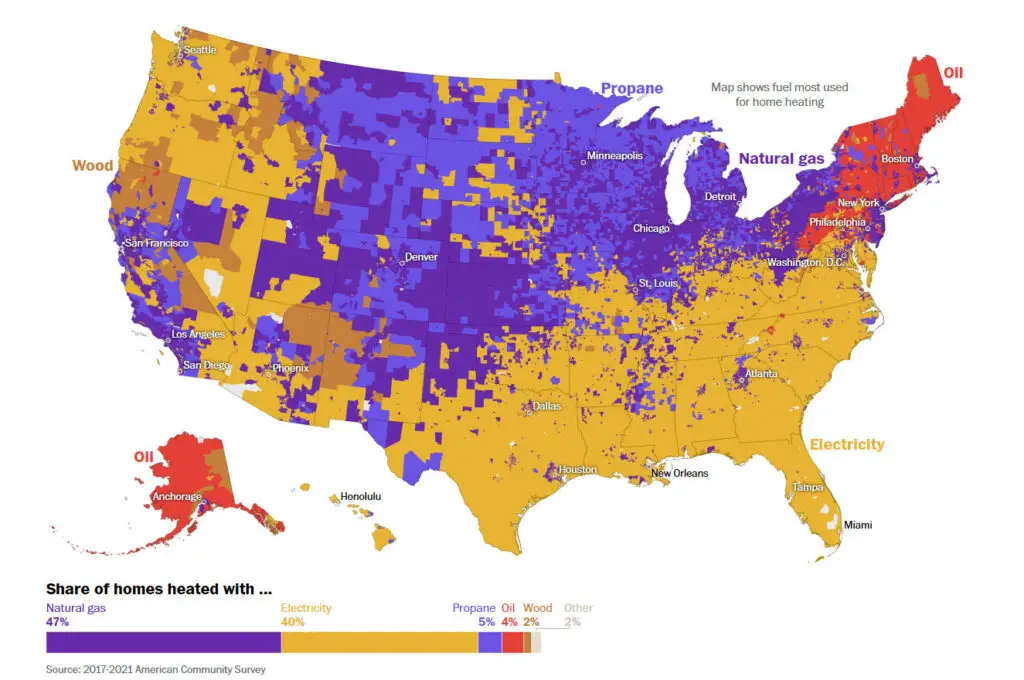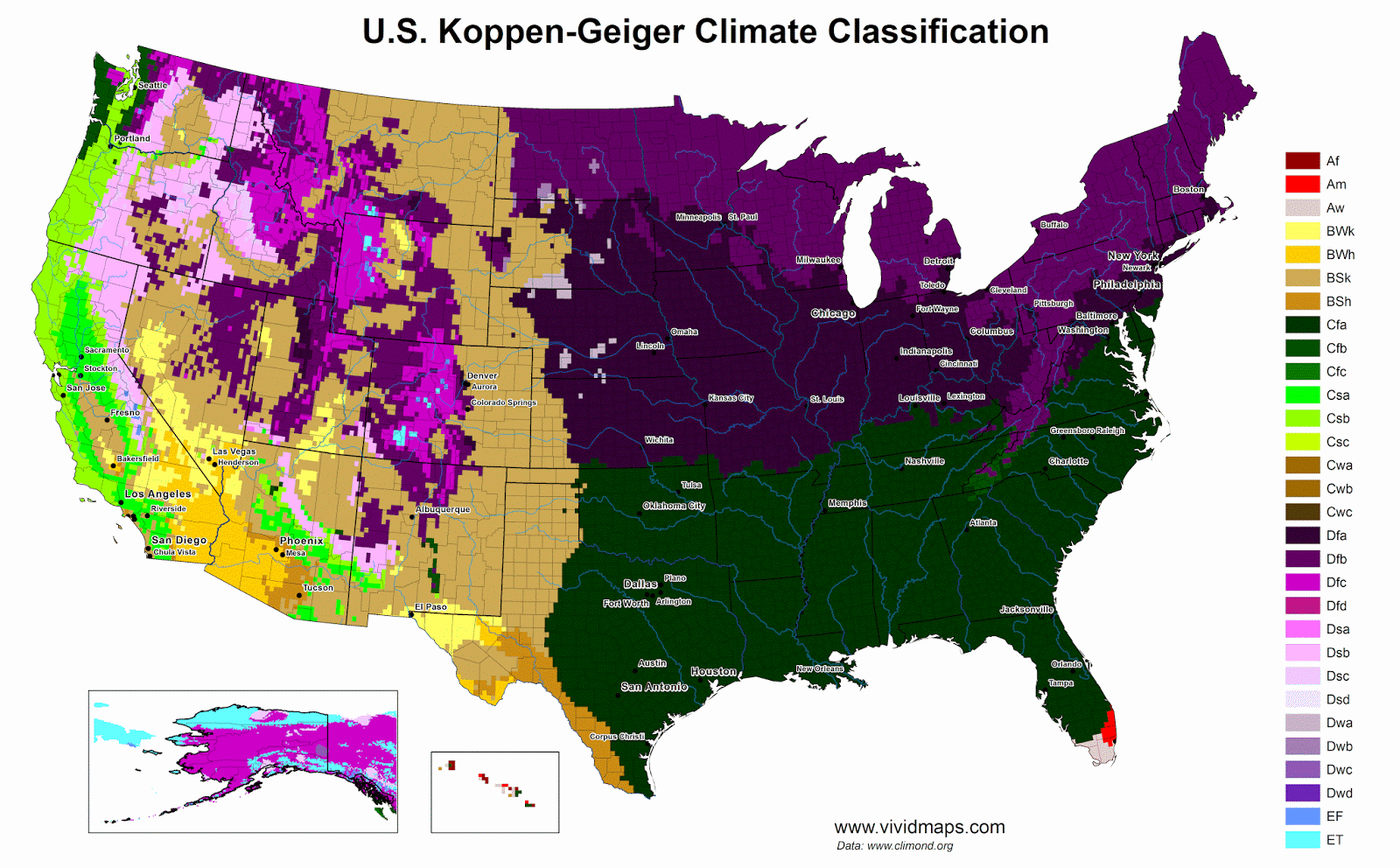How Americans Heat Their Homes
Heating a home is a basic necessity, but Americans’ methods of doing so vary dramatically across the country. These differences aren’t just about climate; they’re shaped by historical choices, energy costs, and infrastructure. Let’s examine why America’s home heating systems are so diverse and what that means for the shift toward cleaner energy sources.
Four Main Heating Methods
Most U.S. homes use one of four fuels for heating: electricity, natural gas, propane, or fuel oil. Natural gas and electricity dominate, accounting for nearly 90% of home heating systems. But this balance shifts depending on where you live:
- Electricity: Found predominantly in the South, where milder winters make it cost-effective. Homes may use older electric resistance heaters or newer, energy-efficient heat pumps.
- Natural Gas: Common in urban areas across the Midwest, West, and Northeast due to the widespread availability of pipelines.
- Propane: More prevalent in rural areas lacking pipeline access.
- Fuel Oil: Concentrated in the Northeast, especially in older homes built before 1920.
A fascinating map the Washington Post team created using the American Community Survey 2021 data illustrates these regional patterns.

Why the South Heats Differently
Let’s travel back to 1960. At that time, just 2% of U.S. homes used electricity for heating. Fast forward to 2000, and that number had jumped to 38% – with most of those homes in the Southern states (University of California Berkeley Energy Institute).
What sparked this transformation? A perfect mix of:
- Mild Southern winters
- Plummeting electricity prices
- Strategic infrastructure development
- Lower installation costs for electric systems
Switching from older resistance heaters to modern heat pumps in this region could significantly reduce energy costs. Heat pumps are three to four times more efficient than resistance heaters and offer air conditioning as an added bonus.
The Midwest and Natural Gas
In the Midwest, colder winters made natural gas the dominant choice. Pipelines are most economical in densely populated areas, making urban and suburban regions the ideal candidates for natural gas heating. Rural areas, however, often rely on propane due to the high cost of pipeline installation in sparsely populated areas.
The Northeast and Fuel Oil’s Legacy
The Northeast’s use of fuel oil is rooted in the early 20th century when many homes were built. Despite its high cost and inconvenience, fuel oil remains common, though efforts to transition to heat pumps or other electric systems are increasing. Tax incentives like the $2,000 credit in the Inflation Reduction Act aim to accelerate this shift.
Challenges and Opportunities in Electrification
Transitioning to cleaner heating methods, such as heat pumps, is essential for reducing carbon emissions. However, the process is uneven:
- Urban Areas: Natural gas remains entrenched, requiring significant incentives and education to promote alternatives.
- Rural Areas: Switching from propane or fuel oil to electric heating is often more straightforward and cost-effective.
- Colder Climates: Modern heat pumps now function efficiently in subfreezing temperatures, but misinformation about their capabilities persists.
Shifting to electricity is only part of the solution. The power grid must also transition to renewable energy sources like wind and solar to fully realize climate goals.
What’s your experience with home heating in your region? Do you see a future where cleaner heating solutions become the norm? Share your thoughts in the comments below – we’d love to hear from you!








